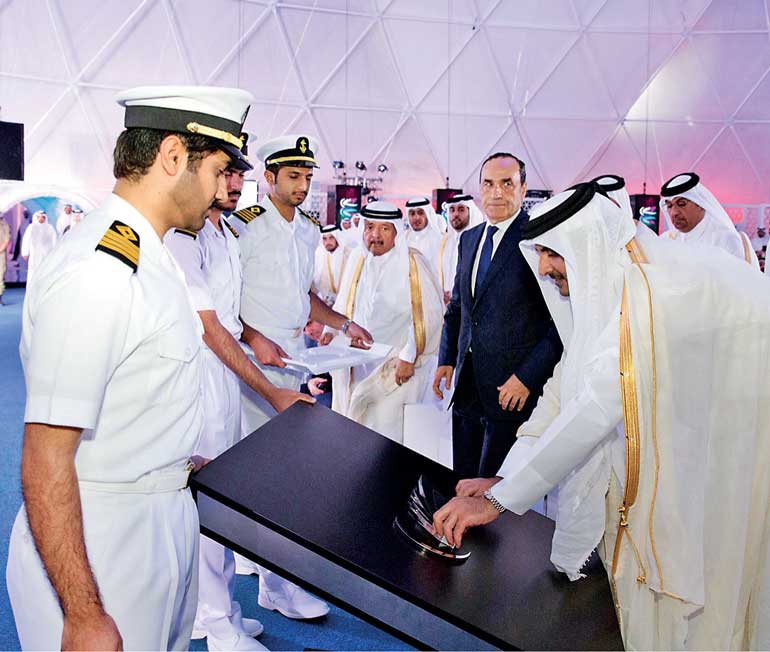Wednesday Dec 11, 2024
Wednesday Dec 11, 2024
Monday, 11 September 2017 00:23 - - {{hitsCtrl.values.hits}}
HAMAD PORT, Qatar (Reuters): Qatar inaugurated a new $7.4 billion port along its Gulf coast last week that officials said would become a regional transport hub and help shield its economy against sanctions enforced by neighbouring Arab states.

Emir of Qatar Sheikh Tamim bin Hamad al-Thani attends the opening ceremony of the Hamad port in Doha, Qatar last week - Qatar News Agency/Handout via REUTERS
The Hamad port, 40km south of Doha, is one of the largest such facilities in the Middle East.
Since Saudi Arabia, Egypt, Bahrain and the United Arab Emirates (UAE) severed ties with Qatar in June, the port has been receiving large quantities of food and building materials for construction projects including stadiums for the 2022 soccer World Cup.
The isolation of Qatar over Doha’s alleged support for militants has raised concerns that projects could be delayed if supplies from the Far East and South Asia are choked.
But officials said Hamad port would allow Qatar to get around the sanctions by importing goods directly from countries such as China and Oman instead of through a major re-export hub in Dubai.
“The port... will break the shackles of any restrictions imposed on our economy. We are not giving up on our hopes and ambitions,” Qatari Transport Minister Jassim bin Saif al-Sulaiti said at a ceremony held in a dome-shaped tent on the docks of Hamad port.
Fireworks exploded above the port on Tuesday as officials delivered speeches praising Qatar’s 37-year-old emir Sheikh Tamim bin Hamad al-Thani for weathering the ‘siege’.
Closure of the Saudi border with Qatar and disruption to shipping routes via the UAE slashed Qatar’s imports by over a third from year-earlier levels in June and July. Institutions in Saudi Arabia, the UAE and Bahrain have begun pulling money out of Qatari banks, threatening their balance sheets.
Qatar has expanded shipping routes to India, Oman, Turkey and Pakistan and announced plans to raise its liquefied natural gas (LNG) output by 30% in an apparent effort to prepare for greater economic independence in the long term.
Hamad port spans 26 square kilometres and will have a capacity of 7.5 million containers a year with terminals built to receive livestock, cereals, vehicles and coastguard vessels, Sulaiti said.